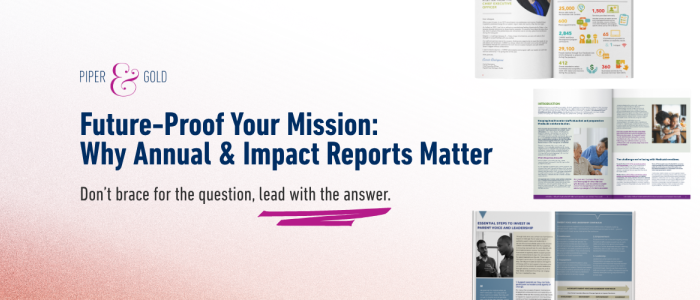
Transforming difficult feedback into meaningful design
Aug 9, 2017
Category: PR tactics
Services: Visual Storytelling
We’ve all been there. You spent hours and hours cultivating a great idea in your head, working through the execution of the idea and perfecting each last detail on the final product so it becomes what you originally envisioned.
Then, it gets ripped apart.
As a designer, you invest your time, your thoughts and honestly, your heart, into each project every. damn. day. So when it comes time to present your work to the client and they decide to pick apart the piece, it’s hard not to let it crush you.
Instead of focusing on the fact that your masterpiece is being picked at, dig deeper to see what the client is looking to achieve. You can help them reach their end goal by being an active listener and taking feedback in a positive and constructive way.
These steps can help create an efficient feedback session:
- Take a chill pill. Bite your tongue and listen to the client. Take a minute to let your brain absorb the requests they are presenting before responding. It’s easy to become defensive and immediately shoot down an edit that could potentially uproot your design, but there is most likely a solution to this. Breathe. Break down the feedback and form a thoughtful and logical response that ultimately presents the client with a solution.
- Don’t take it personally. Let’s face it, we designers know what we’re doing. We know what works and what doesn’t, but we also have our own personal taste when it comes to what looks good. Letting personal biases get in the way creates unnecessary obstacles in the creative process instead of focusing on the ultimate goal, which is always the impact. It’s your job as the designer to interpret the feedback and determine if the requested edits push you closer to the end goal. Don’t let your personal preference cloud your judgement.
- Appreciate honesty. Sugarcoated feedback from clients is counterproductive. When a client gives straight-forward requests and makes it clear what they do or do not like about the piece, it’s a lot easier to find a solution to the problem. However, being honest doesn’t just mean saying “I don’t like it” and calling it good. But, that’s a topic for another day.
- Practice humility. Although edits and criticism can bruise your ego, it keeps you grounded. You become more approachable to the client and easier to work with as a whole. It pushes you and your work further and makes you more open to learning from others.
- Implement to your best ability. After you’ve had some time to analyze the feedback, come up with solutions to make it work cohesively into the piece. Not all edits are feasible, but it’s your job as the designer to incorporate them to the best of your ability.
Feedback challenges you to be a better designer. Though it can be disappointing when a client doesn’t agree with your vision, take advantage of the opportunity to take your work to the next level and help your client achieve their goal.



